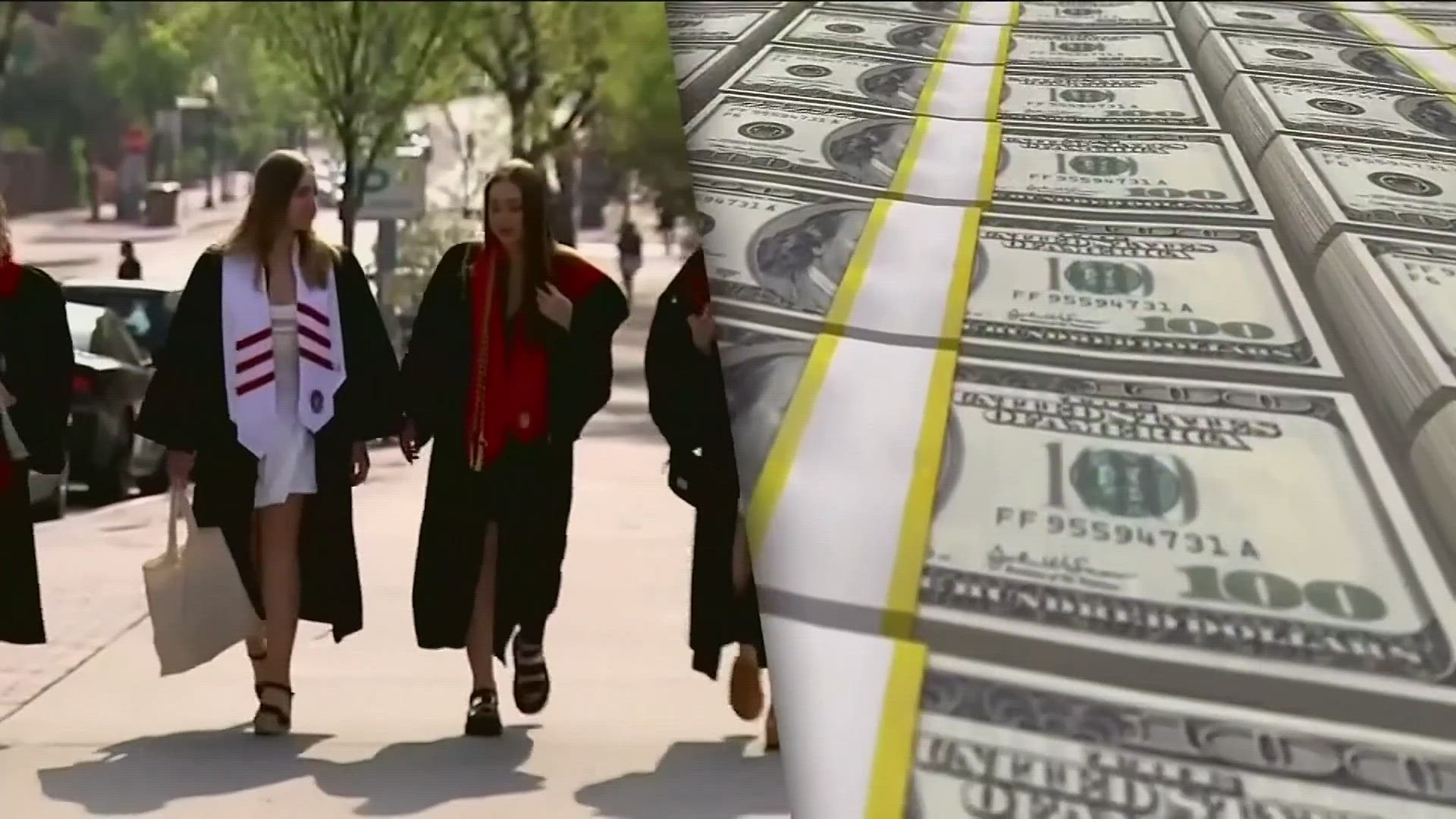ATLANTA — Tens of millions of Americans are facing the reality that they will have to resume paying back their student loans, beginning October 1.
Pres. Joe Biden’s loan-forgiveness plan was rejected by the U.S. Supreme Court on Friday.
So the president is now working on trying to provide relief in other ways -- such as allowing people to delay re-starting their monthly loan payments for up to a year, without defaulting on their loans, and without harm to their personal credit ratings.
But they would still owe the money, anyway, with interest.
Families are asking questions about what’s next.
Financial planner Bradley Rosen, with Longevity Financial in Atlanta, said Friday that people are worried about sticker shock — not sure how they’ll be able to afford whatever their monthly payments are going to be.
“We've got 43 million people being affected by this, so this is not a small little event here,” Rosen said. "90 percent of those individuals are earning less than $75,000 a year."
His suggestion — those with outstanding student loans should begin, now, calculating what their payment will be as of October 1.
“First, identifying what you're going to have to start paying is going to be fundamental to then figuring out where are you going to find those new dollars,” he said. “Interest payments are accruing. So that's the best thing an individual can do is go to StudentAid.gov, to start looking at, ‘What is my payment going to now look like?'"
Should people refinance their student loans, to lower their monthly payments?
“Everything should be on the table to explore” he said, “but in the high interest rate world we're in, you may find that that's not going to give you the savings you need.”
How else can people afford to resume student loan payments?
Rosen said it may mean simply making a list of their monthly expenditures and trying to find a way to cut back on their spending, even if they think there is nothing else they can cut from their household budget.
“Where are there avenues that we can reduce expenses to help offset the new expenses that are coming? We've got to uncover, every which way, how you're spending your money in order to get you some savings, to then bring on these new payments that are coming in October," Rosen said.
And getting ready now to meet that obligation again is crucial, he said.
"If 43 million people are not able to pay bills, how is that going to affect our economy? 43 million people is not a drop in the bucket when only 135 million of us are actually paying taxes. So, if 43 million can't afford to pay for the services and goods that they're normally purchasing, that's going to affect the stock companies that many are relying on for their 401(k)s and IRAs."
If student loan forgiveness were to continue, who would be paying for those loans?
“About $400 billion is what having the student relief program was costing,” Rosen said. “And so that's just going to add on to the national debt. There's no magic pill here. Helping student loan debt helps on one end, but at the same time, it adds more debt on the other end. And so hopefully the government is going to find the right balancing act here in order to make both sides feasible enough that we don't go to a tailspin in the economy, and that 43 million people don't go into bankruptcy, either.”
So the impact, he said, is not just on those owing student loan money, but on the U.S. economy, as well.

